Angkoon Phinyomark
UNB StepUP: A footStep database for gait analysis and recognition using Underfoot Pressure
Feb 26, 2025Abstract:Gait refers to the patterns of limb movement generated during walking, which are unique to each individual due to both physical and behavioural traits. Walking patterns have been widely studied in biometrics, biomechanics, sports, and rehabilitation. While traditional methods rely on video and motion capture, advances in underfoot pressure sensing technology now offer deeper insights into gait. However, underfoot pressures during walking remain underexplored due to the lack of large, publicly accessible datasets. To address this, the UNB StepUP database was created, featuring gait pressure data collected with high-resolution pressure sensing tiles (4 sensors/cm$^2$, 1.2m by 3.6m). Its first release, UNB StepUP-P150, includes over 200,000 footsteps from 150 individuals across various walking speeds (preferred, slow-to-stop, fast, and slow) and footwear types (barefoot, standard shoes, and two personal shoes). As the largest and most comprehensive dataset of its kind, it supports biometric gait recognition while presenting new research opportunities in biomechanics and deep learning. The UNB StepUP-P150 dataset sets a new benchmark for pressure-based gait analysis and recognition. Please note that the hypertext links to the dataset on FigShare remain dormant while the document is under review.
Unsupervised Domain Adversarial Self-Calibration for Electromyographic-based Gesture Recognition
Dec 21, 2019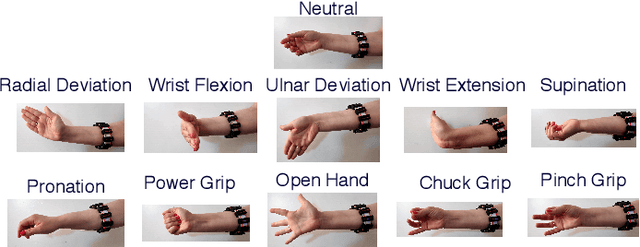
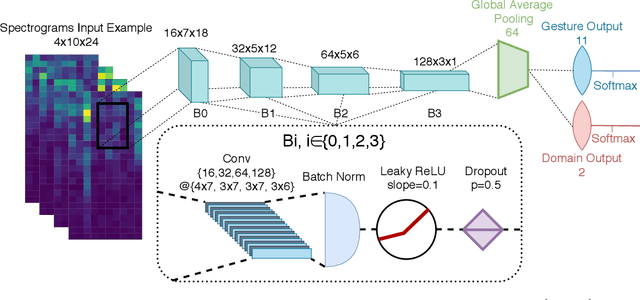
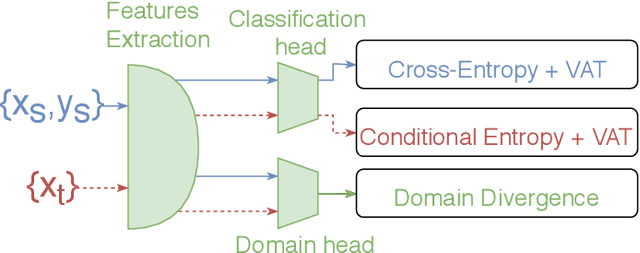
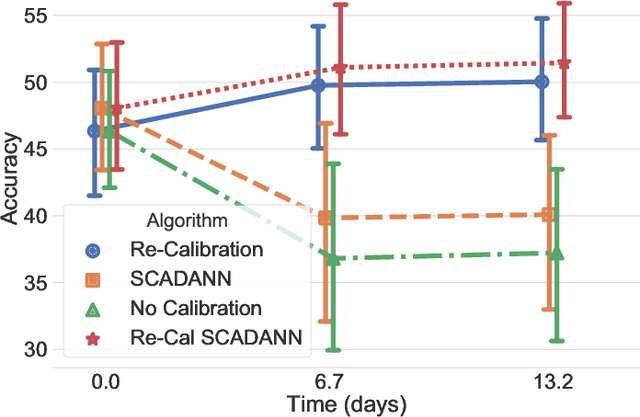
Abstract:Surface electromyography (sEMG) provides an intuitive and non-invasive interface from which to control machines. However, preserving the myoelectric control system's performance over multiple days is challenging, due to the transient nature of this recording technique. In practice, if the system is to remain usable, a time-consuming and periodic re-calibration is necessary. In the case where the sEMG interface is employed every few days, the user might need to do this re-calibration before every use. Thus, severely limiting the practicality of such a control method. Consequently, this paper proposes tackling the especially challenging task of adapting to sEMG signals when multiple days have elapsed between each recording, by presenting SCADANN, a new, deep learning-based, self-calibrating algorithm. SCADANN is ranked against three state of the art domain adversarial algorithms and a multiple-vote self-calibrating algorithm on both offline and online datasets. Overall, SCADANN is shown to systematically improve classifiers' performance over no adaptation and ranks first on almost all the cases tested.
Virtual Reality to Study the Gap Between Offline and Real-Time EMG-based Gesture Recognition
Dec 16, 2019
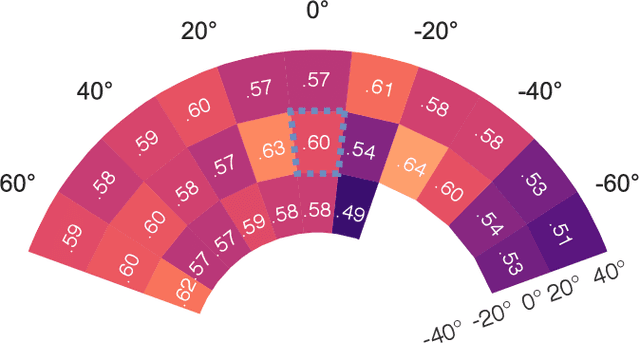
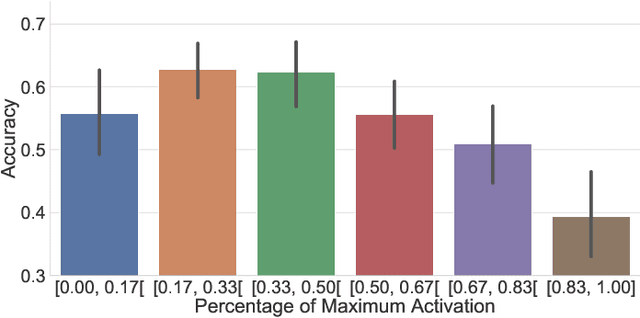
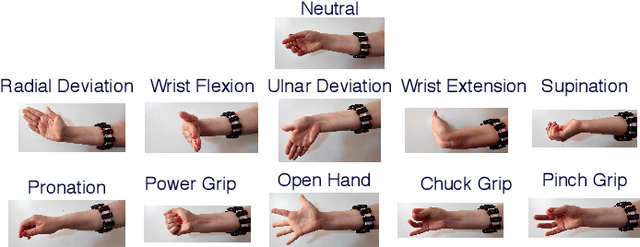
Abstract:Within sEMG-based gesture recognition, a chasm exists in the literature between offline accuracy and real-time usability of a classifier. This gap mainly stems from the four main dynamic factors in sEMG-based gesture recognition: gesture intensity, limb position, electrode shift and transient changes in the signal. These factors are hard to include within an offline dataset as each of them exponentially augment the number of segments to be recorded. On the other hand, online datasets are biased towards the sEMG-based algorithms providing feedback to the participants, limiting the usability of such datasets as benchmarks. This paper proposes a virtual reality (VR) environment and a real-time experimental protocol from which the four main dynamic factors can more easily be studied. During the online experiment, the gesture recognition feedback is provided through the leap motion camera, enabling the proposed dataset to be re-used to compare future sEMG-based algorithms. 20 able-bodied persons took part in this study, completing three to four sessions over a period spanning between 14 and 21 days. Finally, TADANN, a new transfer learning-based algorithm, is proposed for long term gesture classification and significantly (p<0.05) outperforms fine-tuning a network.
Interpreting Deep Learning Features for Myoelectric Control: A Comparison with Handcrafted Features
Nov 30, 2019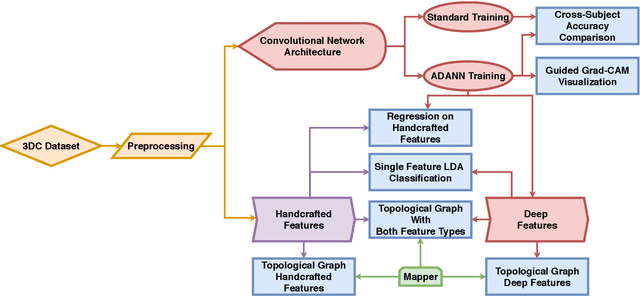
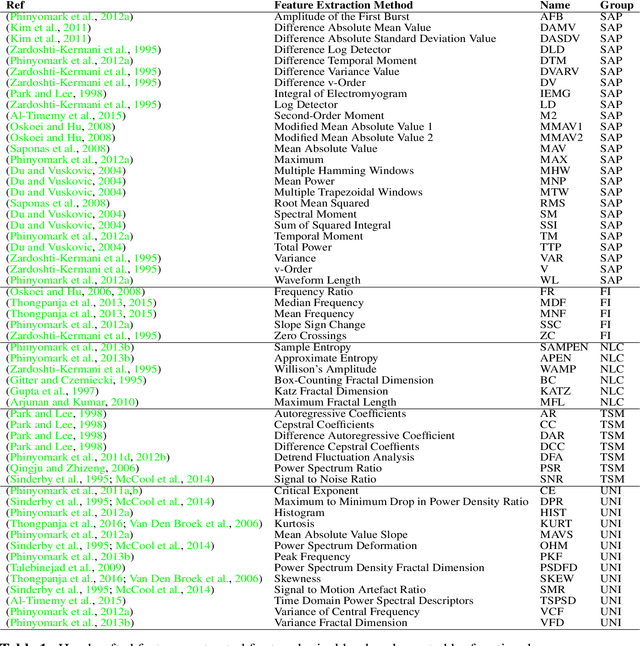
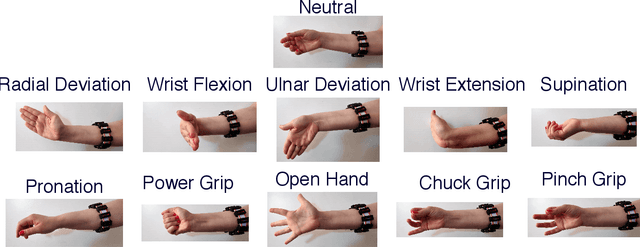
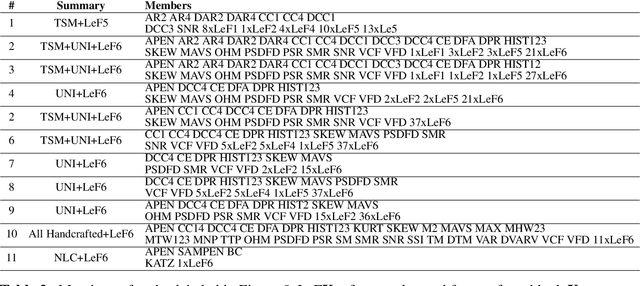
Abstract:The research in myoelectric control systems primarily focuses on extracting discriminative representations from the electromyographic (EMG) signal by designing handcrafted features. Recently, deep learning techniques have been applied to the challenging task of EMG-based gesture recognition. The adoption of these techniques slowly shifts the focus from feature engineering to feature learning. However, the black-box nature of deep learning makes it hard to understand the type of information learned by the network and how it relates to handcrafted features. Additionally, due to the high variability in EMG recordings between participants, deep features tend to generalize poorly across subjects using standard training methods. Consequently, this work introduces a new multi-domain learning algorithm, named ADANN, which significantly enhances (p=0.00004) inter-subject classification accuracy by an average of 19.40\% compared to standard training. Using ADANN-generated features, the main contribution of this work is to provide the first topological data analysis of EMG-based gesture recognition for the characterisation of the information encoded within a deep network, using handcrafted features as landmarks. This analysis reveals that handcrafted features and the learned features (in the earlier layers) both try to discriminate between all gestures, but do not encode the same information to do so. Furthermore, using convolutional network visualization techniques reveal that learned features tend to ignore the most activated channel during gesture contraction, which is in stark contrast with the prevalence of handcrafted features designed to capture amplitude information. Overall, this work paves the way for hybrid feature sets by providing a clear guideline of complementary information encoded within learned and handcrafted features.
A Novel Feature Extraction for Robust EMG Pattern Recognition
Dec 26, 2009
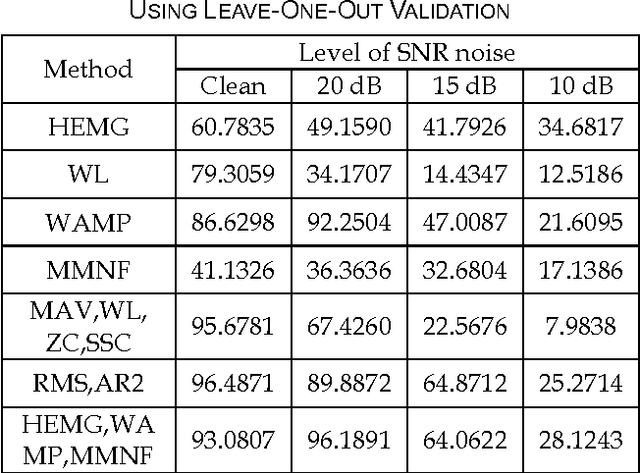
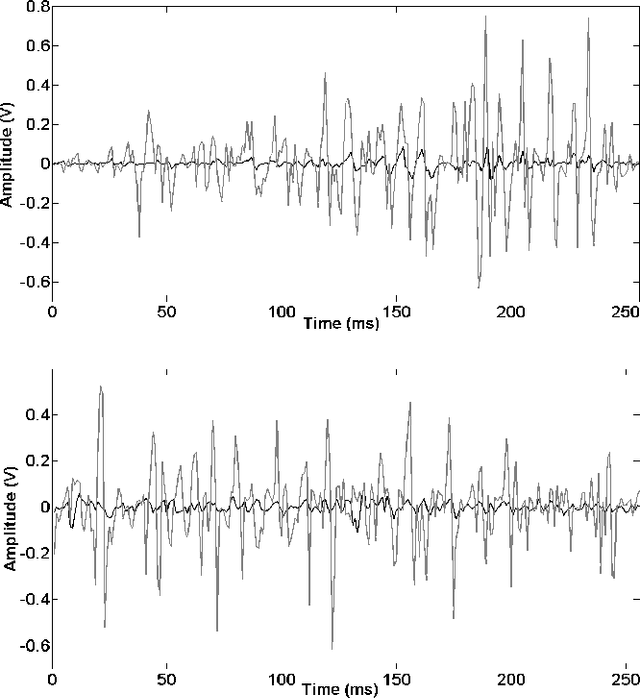

Abstract:Varieties of noises are major problem in recognition of Electromyography (EMG) signal. Hence, methods to remove noise become most significant in EMG signal analysis. White Gaussian noise (WGN) is used to represent interference in this paper. Generally, WGN is difficult to be removed using typical filtering and solutions to remove WGN are limited. In addition, noise removal is an important step before performing feature extraction, which is used in EMG-based recognition. This research is aimed to present a novel feature that tolerate with WGN. As a result, noise removal algorithm is not needed. Two novel mean and median frequencies (MMNF and MMDF) are presented for robust feature extraction. Sixteen existing features and two novelties are evaluated in a noisy environment. WGN with various signal-to-noise ratios (SNRs), i.e. 20-0 dB, was added to the original EMG signal. The results showed that MMNF performed very well especially in weak EMG signal compared with others. The error of MMNF in weak EMG signal with very high noise, 0 dB SNR, is about 5-10 percent and closed by MMDF and Histogram, whereas the error of other features is more than 20 percent. While in strong EMG signal, the error of MMNF is better than those from other features. Moreover, the combination of MMNF, Histrogram of EMG and Willison amplitude is used as feature vector in classification task. The experimental result shows the better recognition result in noisy environment than other success feature candidates. From the above results demonstrate that MMNF can be used for new robust feature extraction.
 Add to Chrome
Add to Chrome Add to Firefox
Add to Firefox Add to Edge
Add to Edge